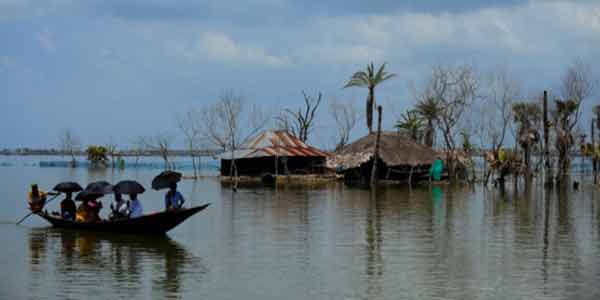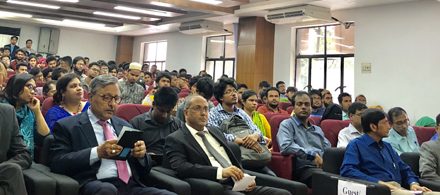Dhaka, Bangladesh (BBN)-Dhaka, the capital of Bangladesh needs climate-smart policies and higher investment to improve its resilience to intense rainfall and to prepare for climate change, says a new World Bank book ‘Urban Flooding of Greater Dhaka in a Changing Climate: Building Local Resilience to Disaster Risk’ and a new report ‘Climate and Disaster Resilience of Greater Dhaka Area: A Micro Level Analysis’, launched today.
Floods and waterlogging in Dhaka regularly disrupt the lives and livelihoods of the city dwellers and most adversely affect the fringe areas and slums. With more frequent and intense rainfall, climate change is likely to further aggravate flooding and waterlogging in the coming decades.
The study calculated potential damages from waterlogging between 2014 and 2050 will be Taka 110 billion in Dhaka, if climate change is not considered.
In a changing climate with more intense rainfalls, the loss will be Taka 139 billion between 2014 and 2050.
The study estimates Dhaka will need Taka 2.7 billion investment in stormwater drainage pumps, drainage pipe clearing and other measures to reduce waterlogging in every ward within 12 hours, in addition to the improvements in the drainage infrastructure proposed in Dhaka’s Detailed Area Plan and Sewerage Master Plan and Narayanganj City Corporation’s Concept Vision Plan.
The incremental cost of adaptation for Dhaka to climate change by 2050 will be about Tk 1.3 billion.
“A mega city like Dhaka needs smart investments to meet the demands of a growing population and rapid urbanization in a changing climate. Mainstreaming disaster risk reduction and climate change adaptations in planning will help the city improve service delivery and become truly a growth center,” said Christine Kimes, Acting Country Head, World Bank Bangladesh.
“Equipped with a menu of investment options to mitigate current waterlogging and further climate-proof urban infrastructure, the study will help the policy makers and city planners decide priority interventions to cope with urban flooding and climate change.”
As different parts of Dhaka and its surrounding areas vary significantly in terms of infrastructure, facilities and resilience to flood and waterlogging, the study assessed Dhaka’s local preparedness for urban flood emergencies at ward level, measuring Climate Disaster Resilience Index (CDRI).
The analysis found the overall CDRI for Dhaka is 2.35 in a five-point scale, indicating a modest level of resilience.
DND and Kallyanpur’ CDRI fall below the city average.
Dhaka can improve disaster resilience by improving governance, implementing the Crisis Management Framework, and mainstreaming disaster risk reduction and climate change adaptation.
“Enhancing disaster resilience of a megacity like Dhaka, and especially preparing the city for unfolding climate-related risks is a daunting task. The city authorities could start with addressing the existing deficits in infrastructure in dealing with historic intense rainfall events. Closing the gap in infrastructure to meet historic climate-related risks will provide a foundation to build additional measures to mitigate climate risks in Dhaka,” said Susmita Dasgupta, Lead Environmental Economist, and co-author of the report.
“Benefits of the recommended investments to mitigate waterlogging in current climate are enlarged by the threat of climate change but exist even in its absence, making such investments an attractive low-regret option.”
This study covered Eastern Dhaka, Goranchatbari, Kallyanpur, Central Dhaka, Old Dhaka, DND and Narayanganj.
The study is funded by the Bangladesh Climate Change Resilience Fund (BCCRF), a multi-donor trust fund, administered by the World Bank.
BBN/SK/AD

No Subscription? You Are Missing Out!
Join the business leaders of Bangladesh who rely on BBN's original reporting and in-depth analysis on business scenario of the country. We send only one daily email. No Spam Guaranteed!









